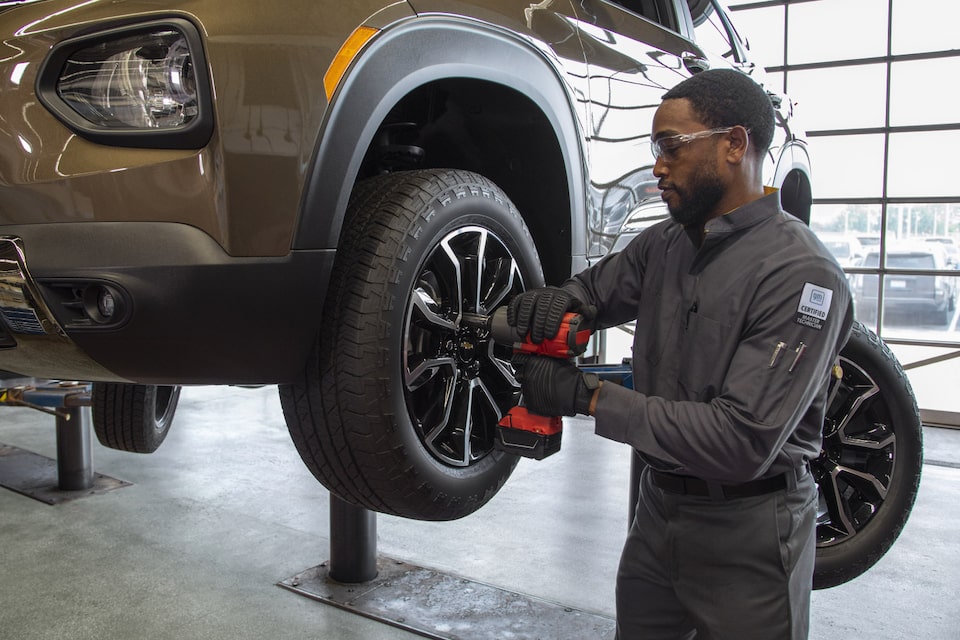Wide Option of Tires Morris IL: Locate the Perfect Suitable For Your Vehicle
Tire Service: The Impact of Weather
When it comes to making sure ideal efficiency and security on the road, recognizing the impact of weather condition conditions on tire solution is essential. In this discussion, we will certainly discover the elaborate partnership between climate conditions and tire service, dropping light on the significance of weather-specific tire maintenance techniques and considerations.
Heat and Tire Efficiency
When exposed to high temperature levels, tires experience changes in efficiency that can dramatically influence vehicle safety and security and handling. The warmth created from extended driving or hot weather condition problems creates the tire rubber to soften, leading to reduced walk life and boosted wear. As the rubber comes to be softer, the tire's grasp when driving reduces, influencing stopping ranges and total grip. In severe situations, excessive warmth can even cause tire blowouts, posturing a severe safety and security threat to the vehicle and its owners.
Additionally, high temperature levels can speed up the process of tire aging, triggering the rubber to degrade more promptly. To reduce the impacts of warmth on tire efficiency, vehicle drivers should frequently inspect their tire pressure, rotate tires to make certain also use, and evaluate for any type of indicators of damages.
Winter Effects
Winter problems can have a substantial effect on tire efficiency and security. As temperature levels drop, tire rubber can solidify, leading to reduced grip on icy or snow-covered roads. In chilly climate, tires may likewise lose air pressure more rapidly, which can influence taking care of and fuel effectiveness. In addition, cold temperatures can trigger tire sidewalls to tense, raising the threat of damages from gaps or various other roadway hazards.
To mitigate the effects of chilly weather on tires, it is important to routinely check tire pressure and inflate them to the producer's advised levels. Using winter months or all-season tires designed for winter problems can also enhance traction and grip on icy or snowy roads - morris tire and alignment. Appropriate tire maintenance, including regular inspections for wear and damages, comes to be a lot more vital throughout colder months to guarantee ideal efficiency and safety and security
Rainy Issues Impact
Throughout stormy conditions, tire performance and safety can be considerably influenced by the wet road surface areas and reduced visibility. The step pattern of tires plays a critical role in preserving grip on damp roadways. Tires with worn-out treads are a lot more vulnerable to hydroplaning, where a layer of water builds up in between the roadway and the tire surface area, leading to loss of grip. To combat this, motorists must consistently inspect their tires for appropriate step depth and think about buying tires particularly developed for wet problems.

Snow and Tire Safety And Security
Snow-covered roads position one-of-a-kind obstacles for vehicle drivers, highlighting the importance of proper tire choice and maintenance. When driving in snowy conditions, having the ideal tires can make a substantial distinction in safety and efficiency. Wintertime tires are go to this site designed with special rubber compounds and walk patterns to supply far better traction on snow and ice compared to all-season tires. The much deeper treads and sipes of wintertime tires assist grip the road better, minimizing the danger of sliding and gliding.
Along with utilizing winter months tires, it is essential to guarantee they are properly blown up. Cold weather can create tire stress to drop, influencing grip and handling (morris tire and alignment). Frequently examining and keeping the proper tire stress is necessary for optimum see this site efficiency in snowy conditions

Weather-Related Tire Upkeep
Weather-related tire upkeep encompasses a variety of techniques intended at making sure ideal tire feature and longevity in different weather circumstances. One vital element of weather-related tire upkeep is tire pressure guideline. Evaluating tire walk consistently and replacing tires when tread wear gets to a specific depth is essential for keeping grip and security in damaging weather.
Final Thought
In conclusion, climate problems have a substantial impact on tire performance and security (mopar tire service specials). From warm affecting tire stress and use to cool weather decreasing traction, it is essential to consider the weather condition when preserving and using tires.
In this conversation, we will discover the elaborate partnership between climate conditions and tire solution, shedding light on the value of weather-specific tire maintenance methods and considerations.
